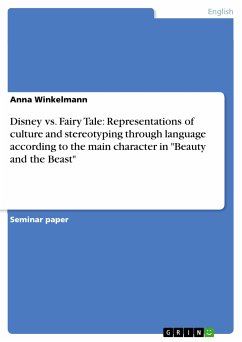Seminar paper from the year 2004 in the subject American Studies - Literature, grade: 1,7, University of Heidelberg, language: English, abstract: Ever since the colonization of the American continent, the Native Americans and their culture have concerned and often fascinated the Euro-American population. This is shown clearly by the facts that the Indian captivity narrative became the first truly popular genre of American literature and that by the beginning of the 19th century Indian American characters had become central characters in theatrical plays and on American stages throughout the country. After the invention of motion picture in 1895, North American Indian characters made an entrance into plenty of American movies. Unfortunately, in most cases it was not of great concern to the producers to depict the Native Indians in a realistic way, but rather to appeal to a broad audience, which was best to be achieved by using popular stereotypes, which had been around for 200 years. Up till today, stereotypical conceptions have dominated American motion picture, and only very few movies have tried to depict Native Americans in a more realistic and sensitive way. Keeping this history of American Indian movies in mind, it becomes apparent that Walt Disney's animated movie Pocahontas, released in 1995, stood in a long tradition of movies, of which only in the recent past a few had broken with the traditional stereotypes. The Disney Company, too, was severely criticized for reusing stereotypical conceptions in their depiction of Pocahontas and her tribe and for being historically inaccurate and insensitive to the Native Americans' past. The following paper will first give a brief summary of the historic Pocahontas' life, which is necessary in order to understand how far Disney kept or changed historic facts, and then depict the origins of the Pocahontas myth. Afterwards, the most important aspects of the movie will be described and analyzed with special regard to the depiction of colonists and colonized. The final chapter will deal with the criticism on the movie and try to conclude whether Disney has indeed failed to be sensitive to Native American culture or if the critics have been too hard on an, after all, animated children's movie.
Dieser Download kann aus rechtlichen Gründen nur mit Rechnungsadresse in A, B, BG, CY, CZ, D, DK, EW, E, FIN, F, GR, HR, H, IRL, I, LT, L, LR, M, NL, PL, P, R, S, SLO, SK ausgeliefert werden.









